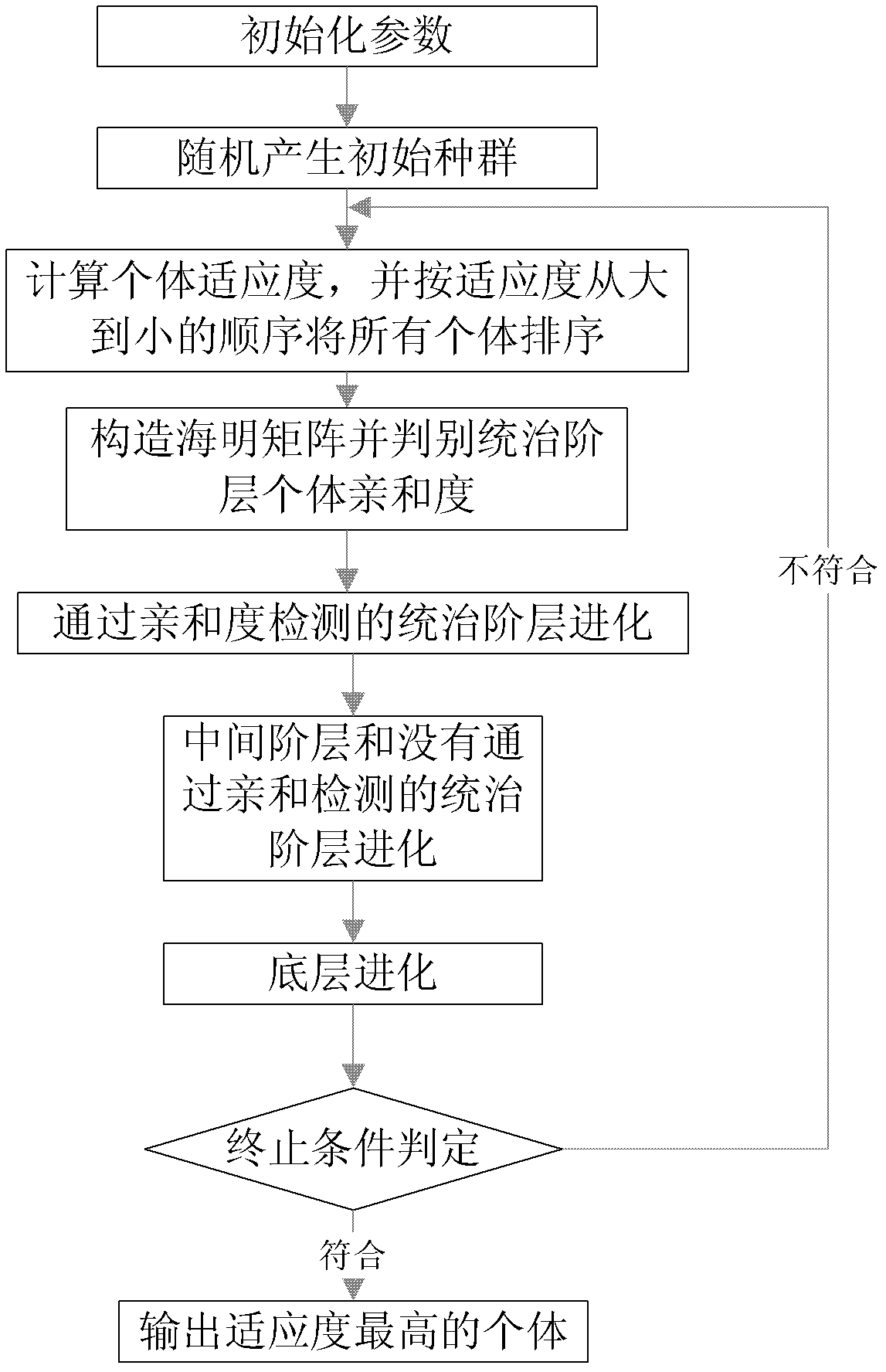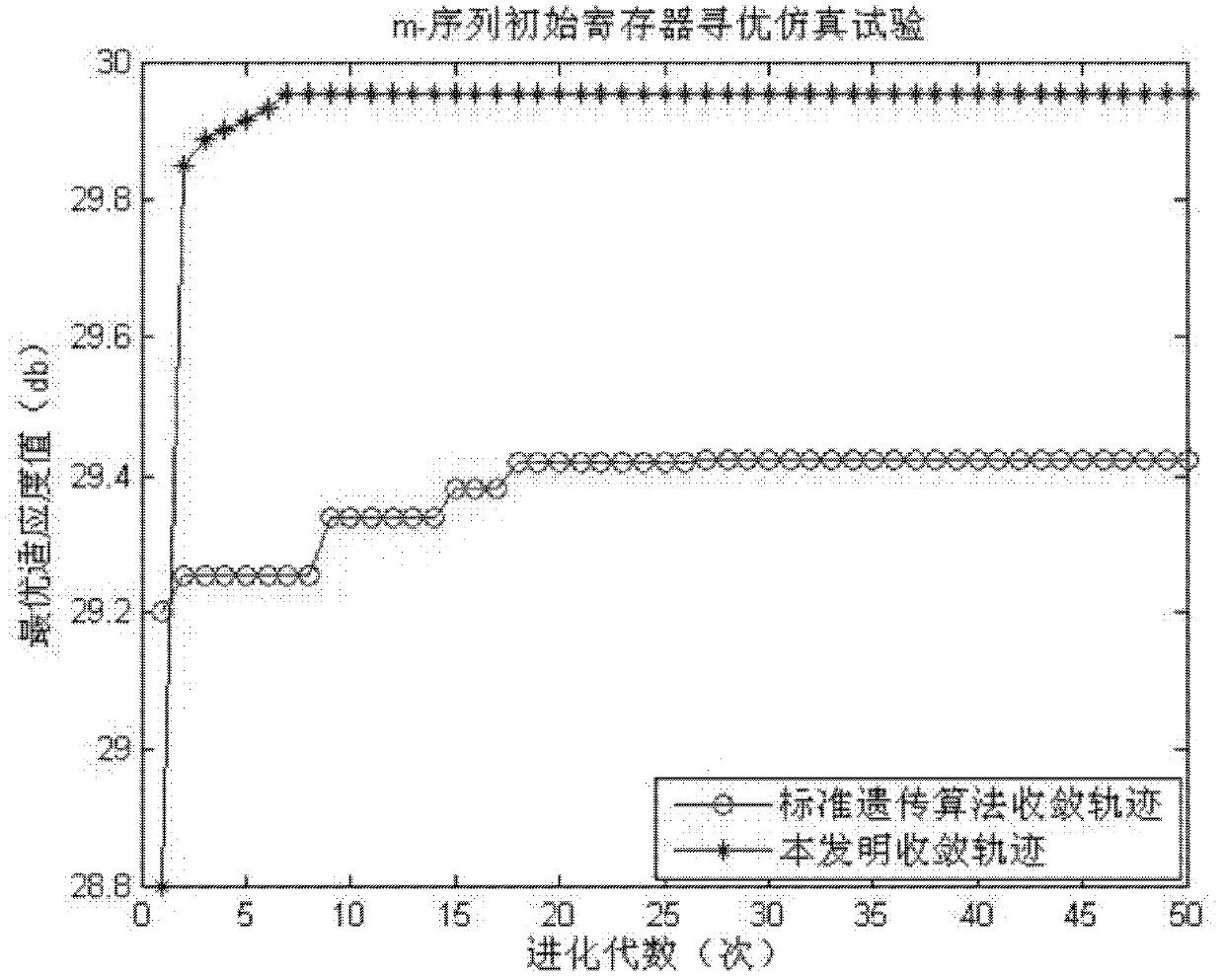Improved genetic algorithm-based m-sequence radar signal waveform optimization method
A technology for improving genetic algorithms and radar signals, applied to radio wave measurement systems, instruments, etc., can solve problems such as weak local search capabilities and easy to fall into local optimal solutions, and achieve the effect of maintaining population diversity
- Summary
- Abstract
- Description
- Claims
- Application Information
AI Technical Summary
Problems solved by technology
Method used
Image
Examples
Embodiment Construction
[0025] refer to figure 1 , the specific implementation steps of the present invention are as follows:
[0026] Step 1. Set parameters.
[0027] According to the order N=2, 3, ..., 11 of the known m-sequence radar signal shift register, select the population size M = 10, 11, ..., 1000 and the Hamming threshold H F =1, 2, ..., N-1, where M needs to be less than 2 N -1,H F Need to be greater than Set the ruling class size M T =7%×M, middle class size M M =60%×M, bottom layer size M F =33%×M; select the number of iterations D=2, 3, . . . , 1000, where D is any natural number greater than 20.
[0028] Step 2. Generate population to be evolved
[0029] Using any random sequence generation mechanism, randomly generate M binary sequences with a length of N, as the m-sequence radar signal shift register value, and form the population to be evolved.
[0030] Step 3. According to the fitness function F(x), respectively calculate the fitness of all shift register values in the...
PUM
 Login to View More
Login to View More Abstract
Description
Claims
Application Information
 Login to View More
Login to View More - R&D
- Intellectual Property
- Life Sciences
- Materials
- Tech Scout
- Unparalleled Data Quality
- Higher Quality Content
- 60% Fewer Hallucinations
Browse by: Latest US Patents, China's latest patents, Technical Efficacy Thesaurus, Application Domain, Technology Topic, Popular Technical Reports.
© 2025 PatSnap. All rights reserved.Legal|Privacy policy|Modern Slavery Act Transparency Statement|Sitemap|About US| Contact US: help@patsnap.com



